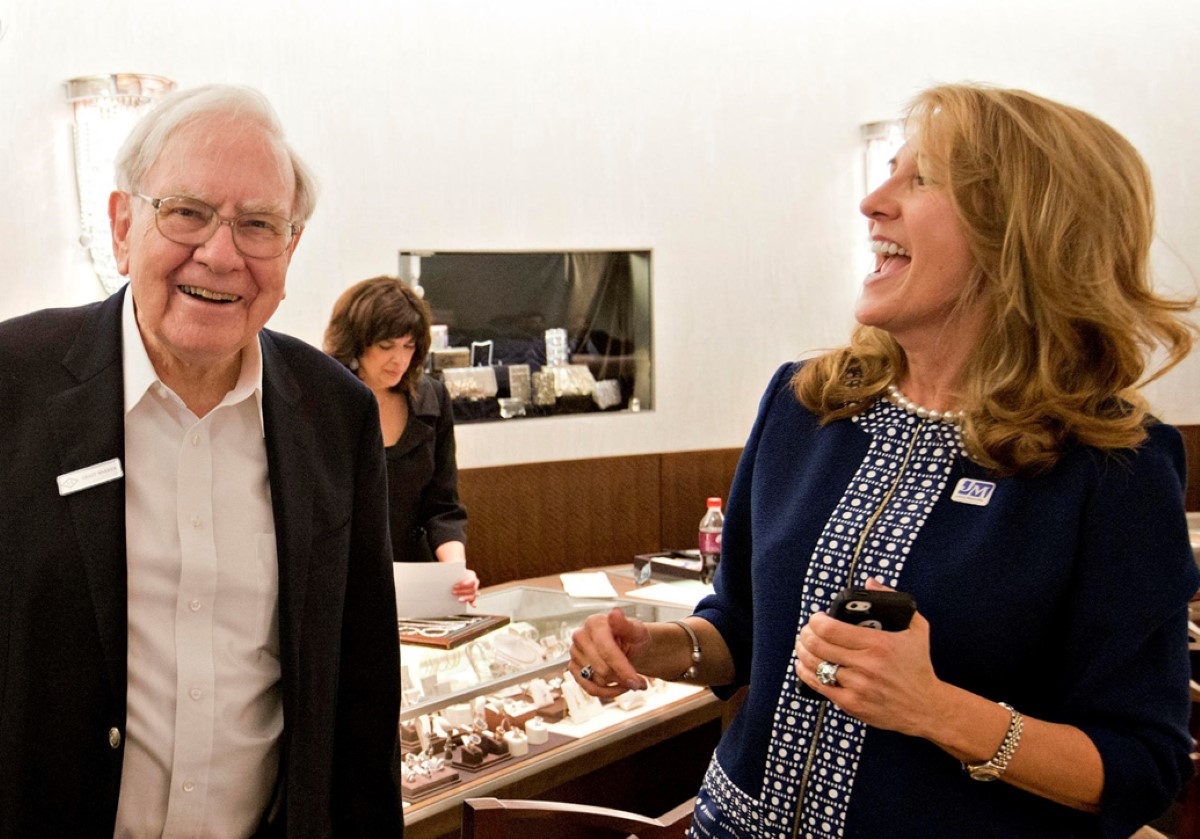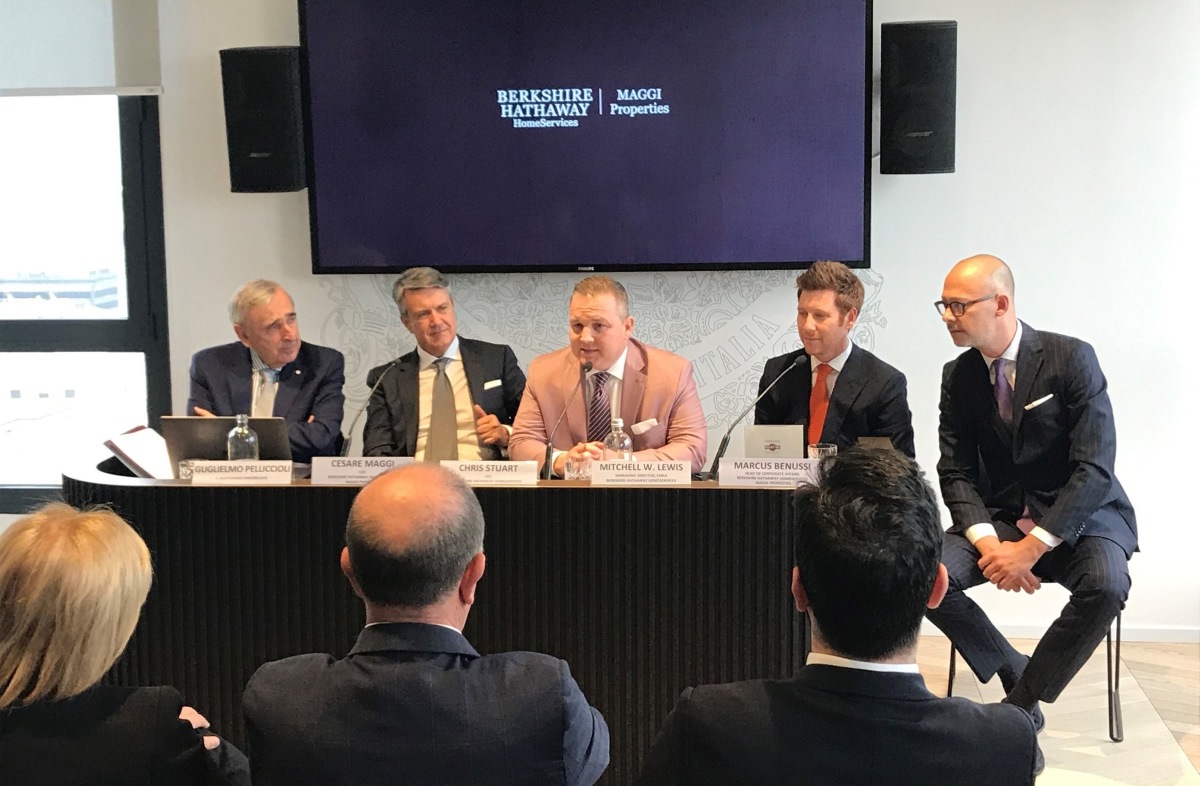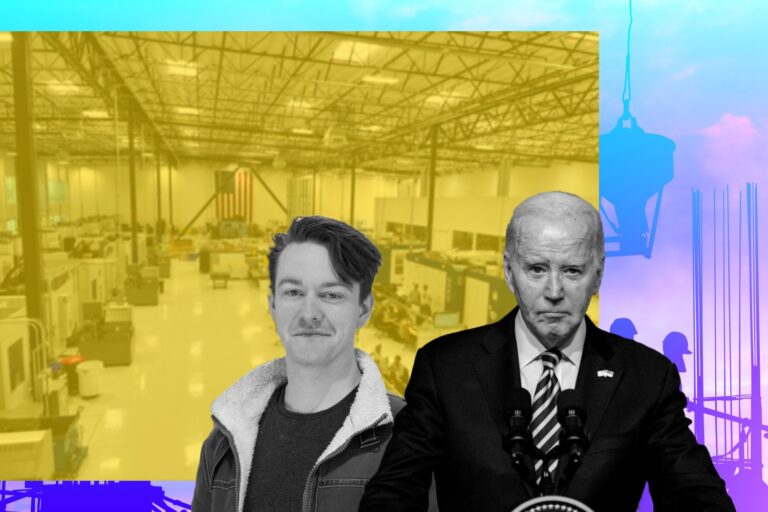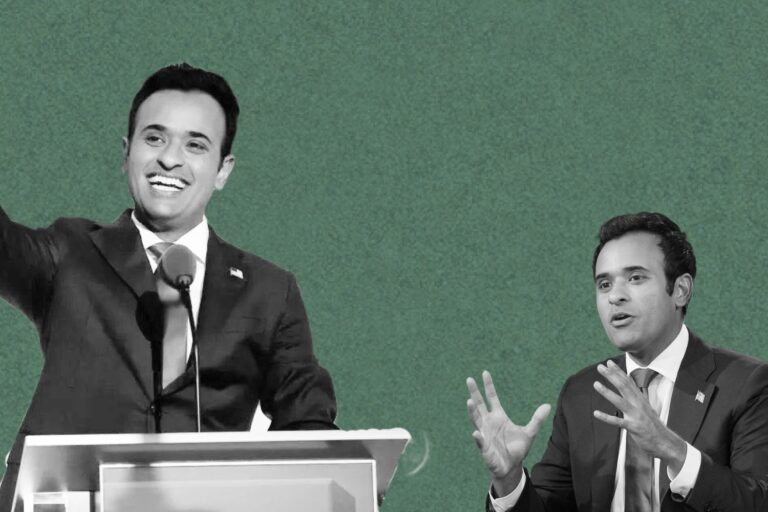Investment Prowess: How Berkshire Hathaway Steers Through Economic Challenges
In the aftermath of World War I, the New England textile sector experienced a pronounced downturn, compounded by the challenges of the Great Depression.
Amidst the prevailing economic adversity, a remarkable trajectory of resurgence emerged, heralding the birth of a corporate giant — Berkshire Hathaway.
Berkshire Hathaway’s Turbulent Beginnings: A Story of Losses and Resilience
One year following its establishment, Berkshire Hathaway boasted 14 facilities and a workforce exceeding 10,000 employees, transforming into a colossal force within the New England textile sector after the merger.
In spite of its substantial scale and production capabilities, Berkshire Hathaway found itself grappling with persistent losses over the subsequent seven years.
During this challenging period, the company experienced a staggering 37% decline in its net worth, leading to the closure of nine of its plants. In an unconventional move, the liquidation proceedings from these closures were strategically redirected towards share buybacks.
This tumultuous phase caught the discerning eye of the legendary investor Warren Buffett. What intrigued Buffett was the apparent discrepancy between Berkshire Hathaway’s shares’ market value and the company’s inherent productive potential.

The perceived undervaluation presented an opportunity that resonated with Buffett’s investment philosophy. Recognizing the latent value within the company, Buffett initiated a pivotal involvement with Berkshire Hathaway, setting in motion a transformative chapter that would reshape the company’s trajectory and contribute to its eventual metamorphosis into one of the most successful conglomerates in the world.
In 1965, Warren Buffett solidified his influence over Berkshire Hathaway by acquiring a controlling stake in the company.
However, Warren Buffett’s journey with Berkshire Hathaway took a dramatic turn after a hostile takeover battle, leading him to realize the grave mistake of acquiring what appeared to be a cheap stock in a declining textile industry.
Faced with the inevitable decline of the textile business, Buffett sought a way out and turned to his trusted friend, Charlie Munger, initially offering to sell Berkshire Hathaway at a fraction of its value. Munger, however, declined and instead proposed an alternative path, introducing Buffett to a company called Blue Chip Stamps.
Blue Chip Stamps operated by selling stamps at a discount to retailers and markets, which were then distributed to customers as rewards.
The unique aspect of this business model was the substantial cash reserve, known as “float”, a lesser-known financial concept.
The Wonders of Float – Genius Model of Investment
Float, in financial terms, refers to the period between when a payment is initiated and when it is actually processed and settled. It’s essentially the “waiting time” during which funds are in transit between accounts. This concept is integral to understanding various aspects of banking and financial transactions.
From a broader perspective, the concept of float underscores a fundamental principle of finance: the time value of money.
By strategically managing the timing of transactions and leveraging float to their advantage, businesses and financial institutions can optimize their cash flows and enhance profitability. This practice, while legal and commonplace, underscores the complex interplay between financial mechanisms and economic incentives.
Buffett’s investment vehicle, Berkshire Hathaway, has a substantial presence in the insurance industry. When individuals pay insurance premiums, the insurer receives cash upfront, creating a reservoir of funds.
However, these funds are not immediately paid out as claims, resulting in what is known as float. This float essentially represents the money that the insurance company holds but doesn’t own – a key aspect of Buffett’s wealth-building strategy.

What makes float an invaluable asset is that it provides Berkshire Hathaway with a significant pool of interest-free capital. Unlike traditional debt or equity financing, where there are associated costs, float is essentially a form of “free” money that can be utilized for investments.
This unique advantage sets Buffett apart. While many investors focus on finding great companies, Buffett combines this with the strategic use of float. The float gives him access to billions of dollars at practically zero cost, enabling him to take advantage of investment opportunities that might not be available to others without a similar capital structure.
Warren Buffett’s investment in Blue Chip Stamps provides a fascinating insight into his strategic thinking and his ability to capitalize on unique business models. Blue Chip Stamps, a trading stamp company, operated on a loyalty rewards system that predated modern digital frequent flyer programs.
The company’s business model involved selling trading stamps to merchants, who would then distribute them to customers as loyalty rewards based on their purchases.
Customers would accumulate these paper stamps, paste them into books, and eventually redeem them for various prizes. The intention was clear – to incentivize repeat business and increase average transaction values.
What made Blue Chip Stamps particularly intriguing to Buffett was the float it generated. As customers took time to accumulate enough stamps to redeem for merchandise, and some even forgot about them, Blue Chip Stamps found itself holding onto a considerable amount of cash deposits – an interest-free float sitting in its bank account.
Recognizing the potential of this float as essentially free capital, Buffett, along with his business partner Charlie Munger, acquired a controlling stake in Blue Chip Stamps.
This move allowed them to access the substantial float that the company had amassed over time. In 1970, the float amounted to $86,189,000, equivalent to over $1 billion in today’s dollars.
Buffett and Munger wasted no time in deploying this float effectively. Their first major move was the acquisition of See’s Candies in 1972 for $25 million, a purchase often regarded as one of their greatest investments. Over the years, See’s Candies proved to be a lucrative venture, with revenues growing from $30 million in 1972 to $383 million in 2007.
Notably, Buffett highlighted in his 2007 annual letter that they only needed to reinvest $32 million since 1972 to accommodate the growth of the business.
Warren Buffett’s move into the insurance industry, particularly with the acquisition of National Indemnity, showcases his keen understanding of the value of float and its role in wealth creation. The shift from a struggling textile mill to an insurance-focused conglomerate marked a pivotal moment for Berkshire Hathaway.
Insurance premiums, in essence, represent a unique form of float for insurance companies. Unlike traditional businesses that rely on equity or debt financing, insurance companies collect premiums from policyholders before having to pay out claims. This creates a pool of funds, the float, which can be invested until needed to cover claims.
The insurance business model involves two main revenue streams: underwriting profits and investment income. Underwriting profits occur when the premiums collected exceed the payouts for claims and operating expenses. The challenge lies in predicting and managing risks effectively, as underwriting losses can erode potential gains from the float.
Buffett recognized the inherent value in National Indemnity because it consistently generated underwriting profits, a rarity in the insurance industry. The company essentially paid Buffett for access to its substantial insurance float.
In Berkshire Hathaway’s 2009 annual letter, Buffett highlighted: “Our float has grown from $16 million in 1967, when we entered the business, to $62 billion at the end of 2009. Moreover, we have now operated at an underwriting profit for seven consecutive years. I believe it likely that we will continue to underwrite profitably in most — though certainly not all — future years. If we do so, our float will be cost-free, much as if someone deposited $62 billion with us that we could invest for our own benefit without the payment of interest.”
The Power of Economic Moats in Investment Strategies
Besides, the concept of a “moat” encapsulates the notion of a company’s ability to maintain its competitive position and fend off challengers over the long term.
Warren Buffett’s investment philosophy revolves around the idea that the broader and more impenetrable a company’s competitive advantage, the more secure his investment becomes.
Bruce Greenwald, the esteemed finance professor at Columbia Business School, offers a pragmatic approach to analyzing competitive moats within businesses.
“You have to understand the economics of moats,” he said. “The first thing you do when you look at a business is asked: ‘Is there a moat here?'”
The concept of a moat serves as a metaphorical barrier that shields a company from encroachment by rivals. Companies with robust moats possess distinct advantages, whether in the form of proprietary technology, brand recognition, economies of scale, or regulatory barriers, which make it challenging for competitors to replicate or surpass their success.
In the absence of a sustainable competitive advantage, businesses are vulnerable to erosion from the competitive landscape. Without the protection afforded by a moat, companies risk losing market share, facing pricing pressures, and experiencing diminished profitability over time.
For investors, recognizing the presence or absence of a moat is essential for assessing the long-term viability and resilience of an investment opportunity.
Using Coca-Cola – one of Buffett’s most famous investments – as an example, Greenwald illustrates how the company’s dominant market position and customer loyalty contribute to its formidable moat.
“It’s going to take people 100 years to get to that 25%,” he said. “That’s a 100-year moat.”
Applying Greenwald’s analytical methodology suggests that Coca-Cola’s business is poised for enduring success, a conclusion that aligns with Warren Buffett’s astute investment decision back in 1988.
Warren Buffett’s endorsement of Apple also highlights the significance of economic moats in his investment strategy.

Berkshire Hathaway’s acquisition of a 2.6% stake in Apple underscores Buffett’s confidence in the company’s ability to maintain a competitive advantage and outperform its rivals in the long term.
Apple’s strong brand loyalty and customer engagement serve as key components of its economic moat, enabling the company to command premium prices and sustain robust sales despite occasional product missteps.
Apple’s customers exhibit a unique propensity to spend generously within its ecosystem, a behavior that distinguishes them from typical retail consumers. Even amidst concerns over the pricing of products like the iPhone X, demand for Apple’s offerings remains robust, underscoring the resilience of its brand and the loyalty of its customer base.
Moreover, Apple’s strategic shift towards services represents a significant opportunity to further monetize its loyal user base.
The convergence of Apple’s economic moat and its focus on service-based revenue models aligns with Buffett’s investment philosophy, which values businesses with sustainable competitive advantages and long-term growth potential.
Building a Brand to Create Privilege: Approach with Salomon Brothers Amid Market Turmoil
In the booming economic landscape of the 1980s, Warren Buffett’s Berkshire Hathaway experienced unprecedented success, reaching new heights through strategic acquisitions such as Furniture Mart and ABC News.
This surge in business prowess elevated Berkshire Hathaway’s stock to an impressive $2,000 per share, consequently propelling Buffett into the billionaire realm.
Buffett’s investment strategy during this era remained event driven. He sought opportunities catalyzed by events like lawsuits or takeovers.
Notably, the 1980s was marked by the prominence of corporate raiders and junk bond financing. Despite the environment, Buffett adeptly avoided being entangled in the corporate fray. In takeover deals, he consistently portrayed the role of a white knight, a reliable ally for companies fending off hostile takeovers.
However, despite his soaring net worth and reputation, Buffett faced challenges in identifying attractive investments.
“All things being equal, a high level of optimism will cause things to be priced high relative to their fair value, or what we call the intrinsic value. So, we have to figure out the intrinsic value, but clearly, in a period of great optimism regarding the future, prices will tend to be high relative to the intrinsic value. And I’d like to buy when the price is below the intrinsic value and sell when it’s above,” Howards Marks, a valued investor, stated.
Under the pressure to outperform and against his traditional value investing principles, Buffett made a surprising move – investing in a Wall Street firm, Salomon Brothers.
The decision was rooted in the history between Buffett and Salomon Brothers, where the firm had previously underwritten bonds for Geico during a turnaround period.
Despite recognizing Salomon Brothers as great business with an excellent management team, Buffett believed the company was overvalued. To capitalize on the situation, Buffett presented Salomon Brothers with a unique proposal.
In exchange for his investment, Buffett demanded a security guaranteeing a 15% return.
Salomon Brothers, seeing immense value in having Buffett as an investor, crafted a preferred stock tailored to his specifications.
This security would yield a 15% return for Buffett in the long run, with unlimited upside potential if Salomon’s stocks surged. Buffett proceeded to invest $700 million in these securities.
In this calculated move, Buffett’s only potential risk lay in the unlikely event of Salomon Brothers going bankrupt.
On October 19th, 1987, the financial world was rattled by the infamous Black Monday, witnessing a catastrophic stock market crash where billions of dollars evaporated.
Amid the chaos, Warren Buffett found himself observing the unraveling of Salomon Brothers.
Simultaneously, the crash presented Buffett with a unique opportunity to invest in a company he had been eyeing for a while – Coca-Cola.
Seizing the moment, he aggressively acquired significant volumes of Coca-Cola stock, leveraging his name and status to do so discreetly for over a year, thanks to special privileges granted by the SEC.
While the shares of Salomon Brothers experienced a remarkable recovery post-Black Monday, Buffett believed the worst was over. However, unbeknownst to him, a storm was brewing.
The Soloman Brothers scandal unfolded as one of its bond traders, Paul Moser, was discovered manipulating a treasury auction for substantial profits. The aggressive trading strategies and risk appetite of Salomon Brothers’ bond trading department came under scrutiny, severely damaging the company’s reputation.
Facing the verge of bankruptcy, Salomon Brothers became the subject of investigations by the Treasury Department and the Federal authorities.
Desperate to restore public trust, Salomon Brothers’ CEO sought the assistance of a trusted figure who could boost market confidence. Buffett, with his renowned integrity, was called upon to save Salomon Brothers.
In a departure from legal battles, Buffett opted for a transparent approach.
He turned Salomon Brothers inside out, providing lawmakers and prosecutors unrestricted access to all documents.
Buffett’s commitment to transparency and rectification was evident in his statement: “I would do whatever was needed to dig out any bit of information about what’s happened in the past and would do everything I could to make sure that things are exactly right in the future.”
Capitalizing on Catalysts for Strategic Investments: McLane Co. and Business Wire
Warren Buffett’s investment strategy also often revolves around identifying companies with catalysts that could drive growth or enhance value.
Warren Buffett’s Berkshire Hathaway’s acquisition of McLane Co., the grocery-distribution business of Wal-Mart Stores, for approximately $1.5 billion was a strategic move that aligned with Berkshire’s manufacturing, service, and retailing division.
This division contributed significantly to Berkshire’s net income in 2021, comprising around 40% of the group’s net income, excluding investment and derivative gains.
One of the key advantages of being part of Berkshire Hathaway for McLane Co. was the reinforcement of its financial stability. McLane’s customers could trust that the company was backed by a cash-rich conglomerate, mitigating concerns about financial uncertainties or operational disruptions.
As Buffett explained: “They know our check will clear, that we won’t, you know, make a proposition and then run into financing difficulties, or try to jiggle around the contract later on.”
Moreover, Berkshire Hathaway’s ownership was advantageous because it did not compete with any of the firms McLane supplied. This ensured a conflict-free environment and allowed Berkshire to invest in improving service levels without compromising on its own business interests. In a business where margins are thin and competition is fierce, maintaining strong relationships with clients is crucial.

McLane’s ability to consistently provide value-added services to clients like Hershey and Mars, while also meeting the stringent demands of buyers like 7-Eleven and Walmart, speaks volumes about its operational prowess and customer-centric approach.
“It’s a very narrow-margin business, obviously. I mean, when you get up to 22 billion of sales and you’ve got Hershey, and Mars, and people like that on one side, and you’ve got buyers like 7- Eleven and Walmart on the other side, they’re not going to leave a lot in between. But you have to perform a valuable service for them in order to earn, you know, say, one cent on the dollar, pre-tax. But McLane’s knows how to do it,” Buffet said.
Besides, the acquisition of Business Wire by Berkshire Hathaway, which exemplified Buffett’s penchant for investing in profitable companies with strong growth potential.
Buffett’s decision to acquire Business Wire was driven by the company’s alignment with Berkshire Hathaway’s investment criteria. Business Wire boasted a strong management team and a track record of profitability, qualities that Buffett values highly in his investment targets.
Additionally, Business Wire’s business model closely mirrored the profile of companies already within Berkshire Hathaway’s portfolio.
The acquisition signaled Buffett’s continued commitment to investing in businesses that are industry leaders and possess significant growth potential. By adding Business Wire to its portfolio, Berkshire Hathaway aimed to capitalize on emerging opportunities and expand its presence in overseas markets.
Lorry Lokey, the founder and chairman of Business Wire, expressed: “Berkshire Hathaway is a perfect fit for Business Wire.”
“Berkshire Hathaway is committed to providing a supportive environment that will enable Business Wire to continue to expand in overseas markets and to capitalize on emerging opportunities. We are very fortunate to become a part of one of the world’s most admired companies,” he added.
Bouncing Back: Warren Buffett’s Resilience Amidst Adversity
Berkshire Hathaway’s journey through adversity has been marked by meticulous attention to detail and a steadfast commitment to fundamental principles.
In 1973, faced with the need to keep their companies afloat, Warren Buffett and Charlie Munger stumbled upon a rare opportunity: Wesco Financial, a savings and loans holding company headquartered in Pasadena, California.
A bidding war ensued for Wesco Financial, pitting Buffett and Munger against the Financial Corporation of Santa Barbara, a company with more significant resources.
Despite the challenge, Buffett’s persuasive skills won out, convincing the owner to sell Wesco to him and Munger. The announcement caused Wesco’s stock to plummet, presenting an opportunity for profit.
However, adhering to their sense of integrity, Buffett and Munger chose to purchase the stocks at a higher price, foregoing potential profit.
With Blue Chip Stamps owning over half of Wesco Financial, Munger assumed the role of chairman, providing a glimmer of hope for the future of Berkshire Hathaway.
Indeed, Munger and Berkshire Hathaway’s association with Wesco Financial exemplifies the astute capital deployment strategies that defined their careers.
Munger, utilizing the capital from Wesco Financial’s subsidiary, Mutual Savings and Loan, embarked on building a substantial investment portfolio. By skillfully managing the deployed capital, Munger played a pivotal role in steering Wesco towards greater financial success.
By the year 1999, Wesco’s investment portfolio had burgeoned to a staggering $2.8 billion. The crown jewel of this portfolio was the significant holding in Freddie Mac, valued at an impressive $1.9 billion.

However, their victory was short-lived as their unconventional business model attracted the attention of the Securities and Exchange Commission (SEC).
Stanley Sporkin, a formidable prosecutor, suspected deception in Buffett and Munger’s complex web of acquisitions and business dealings related to Wesco Financial. The SEC’s scrutiny threatened not only their business but also their impeccable reputation.
For Buffett and Munger, reputation mattered more than anything else. Colleagues and associates rallied to their defense, contacting Sporkin to vouch for their integrity.
The substantial support persuaded the SEC to abstain from pressing charges, preserving their reputation, and allowing their business to continue as usual.
Buffett, recognizing the value of media, went on to acquire newspaper companies, including the Washington Post.
Convinced of the long-term value of owning media companies, he made a groundbreaking move by acquiring the Buffalo Evening News for a record-breaking $35 million. However, realizing the complexity of their investment deals, Buffett decided to consolidate businesses.
Simultaneously, Buffett encountered personal challenges as he discovered a tumor in his colon in early 2000, leading to hospitalization and surgery. While Buffett recovered, the stock market experienced a nosedive, marking the bursting of the dot-com bubble.
Following the burst of the dot-com bubble, Warren Buffett’s reputation experienced a revival, and he was prepared to re-enter the investment landscape.
However, a significant obstacle emerged less than two years later with the devastating 9/11 attacks, proving particularly challenging for Buffett as he owned numerous insurance companies that had to pay billions in damages.
Undeterred by the setback, Buffett remained determined to make a comeback. Recognizing the economic impact of the 9/11 attacks, he saw an opportunity to acquire companies at a steep discount.
Among his strategic acquisitions were the McLane company and Business Wire, as mentioned above.
By 2005, Buffett had once again ascended to the top of the business world. His journey to this situation involved years of astute business acquisitions and brand building.
In 2006, Warren Buffett witnesses the profitability of his investment in Gen Re, marking a rebound from earlier struggles. However, he senses an overheated market and struggles to identify new profitable opportunities.
“Terrific game that way because you can sit there and wait, and wait, and wait for the right pitch, and, and there are not many things in life where you get that option”, Buffet said.
Little does Buffett know that a cataclysmic economic event is looming just two years away, set to unleash unprecedented financial destruction. As the housing crisis deepens, Wall Street, once an impregnable fortress, begins to crumble.
Legendary firms teeter on the edge of ruin, and one such firm, Goldman Sachs, turns to Warren Buffett in a desperate bid to restore confidence and avert financial disaster.
Buffett, strategically bailing out Goldman Sachs, negotiates favorable deals ensuring significant profits once the firm recovers. Employing the same tactic as General Electric, he invests $3 billion in preferred stock with unlimited upside and no downside.
The year 2008 emerges as one of the most lucrative periods for Buffett, investing in troubled companies and distressed debts. However, Berkshire Hathaway has become so heavily invested that it runs out of cash for the first time in history.
As the dust settles on the housing crisis, the American economy experiences a remarkable resurgence, with an enduring period of prosperity in the stock market.
Shares of Berkshire Hathaway soared to unprecedented heights. Yet, Buffett faces a new challenge – the difficulty of finding impactful businesses to invest in due to Berkshire Hathaway’s immense size.
Warren Buffett made a historic pledge to donate approximately 85% of his nearly 475,000 Berkshire Class A shares to various philanthropic causes. The primary beneficiary was the Bill & Melinda Gates Foundation, named after his late wife, alongside foundations run by each of his three children.
Buffett structured the donation plan with a gradual release of shares, starting with 5% in 2006 and subsequent years. While the size of his contributions decreased annually, 2013 saw a notable exception when he doubled the size of his donations to his children’s foundations.
Over the years, Buffett has converted around 275,000 of his Class A shares into more affordable and liquid Class B shares, aligning with the planned contributions to the five beneficiary groups.
These gifted shares are presently valued at about $50 billion, based on their original value, surpassing Buffett’s personal net worth in 2006.
Had he retained these shares, their value would be approximately $130 billion today, given Berkshire’s stock price surge since the inception of the giving program.
Currently ranked seventh in the Bloomberg Billionaires Index with a net worth of $113 billion, Buffett has reached the halfway point in his gifting journey.









